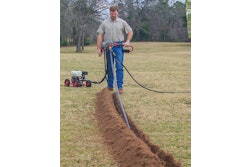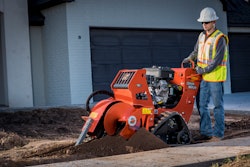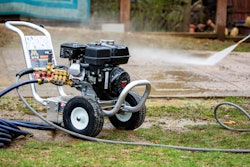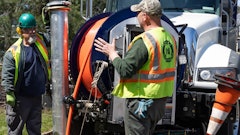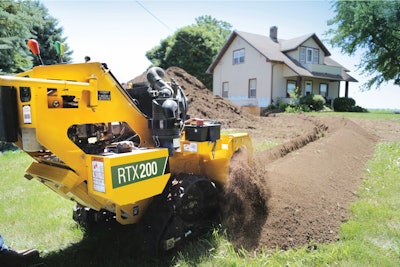
Soil type, jobsite size, maintenance requirements—these are just a few of the items rental companies should encourage irrigation professionals to consider before they begin a project that involves trenching.
Experts from Vermeer Corp. and Little Beaver expand on what irrigation pros should know before they trench.
1. Safety first
The first and most important safety measure when doing any work underground starts before the project. Irrigation pros should call 811 at least three business days before the project starts.
The free service, available in the U.S. and Canada, sends professionals to properties and jobsites to mark the location of underground utility lines.
“From there, once underground utilities are mapped—and before the project starts—it’s a good idea to mark a path for the trench,” says Joe Haynes, president of Little Beaver. “This path increases safety by helping operators avoid tree roots, rocks, underground utilities and other obstacles.”
Other safety items to look for include a slip clutch to protect the machine when encountering an obstacle with the cutter, a shroud around the cutter wheel that protects against flying debris and whether the trencher operates with a forward push movement, giving operators a clear view of the path ahead and a lower risk of falls or injuries.
2. Project specs
To choose the best trencher for the job at hand, rental companies should ask irrigation contractors about the specifications of the project they plan to undertake. That will help determine whether they need a large trencher or small trencher, a ride-on trencher or walk-behind machine.
“There’s no need to go for a big, chain-driven trencher if your project requires shallow depth trenching,” says Haynes says. “Not only do these trenchers often dig deeper than needed, but they’re hard on lawns and can’t get into the small spaces mini trenchers can. Mini trenchers are suited for shallow depth trenching between 0.5 inch and 4 inches wide with adjustable depth controls down to 13 inches deep.”
Additionally, Haynes says that mini trenchers can fit through narrow spaces, doorways, fence gates, next to a house or between landscaping features, gliding over delicate turf with pneumatic tires that eliminate the damage caused by larger machines.
3. Ground conditions
Soil type is another factor irrigation pros should keep top of mind, according to Kyle Newendorp, product specialist at Vermeer Corp.
“Whether they work in rocky or clay or sandy soil determines what they want to build their chain around,” Newendorp says, adding that each trencher has cups that dig the dirt and push it to one side and teeth that perform that cutting.
So, for example, if the soil is rockier, irrigation pros will want more teeth. For less rocky or sandy soil or even black dirt, the cups on the trencher become more prevalent, Newendorp says.
4. Tracked or wheeled trencher
It’s also important for rental companies to help irrigation pros decide whether a wheeled or tracked trencher would be most appropriate for the job at hand.
“Tracked machines are popular because of their maneuverability and traction, but they do tear up the grass a little bit more,” Newendorp says. “So, if they want to go with a unit that’s a little bit heavy, they could go with a tire unit.”
Newendorp notes that with tracked models, irrigation pros should be aware that there’s a little more maintenance to make sure that tracks are tightened.
5. Operator considerations
Because the operator is the one using the trencher all day long, rental companies can steer irrigation professionals toward trenchers that are ergonomic and easy to use the machines are, Haynes says.
Additionally, irrigation pros should look for a trencher that streamlines the backfill process to save on time and energy.
Editor's Note: This article was originally published in Green Industry Pros, sister publication of Rental.






